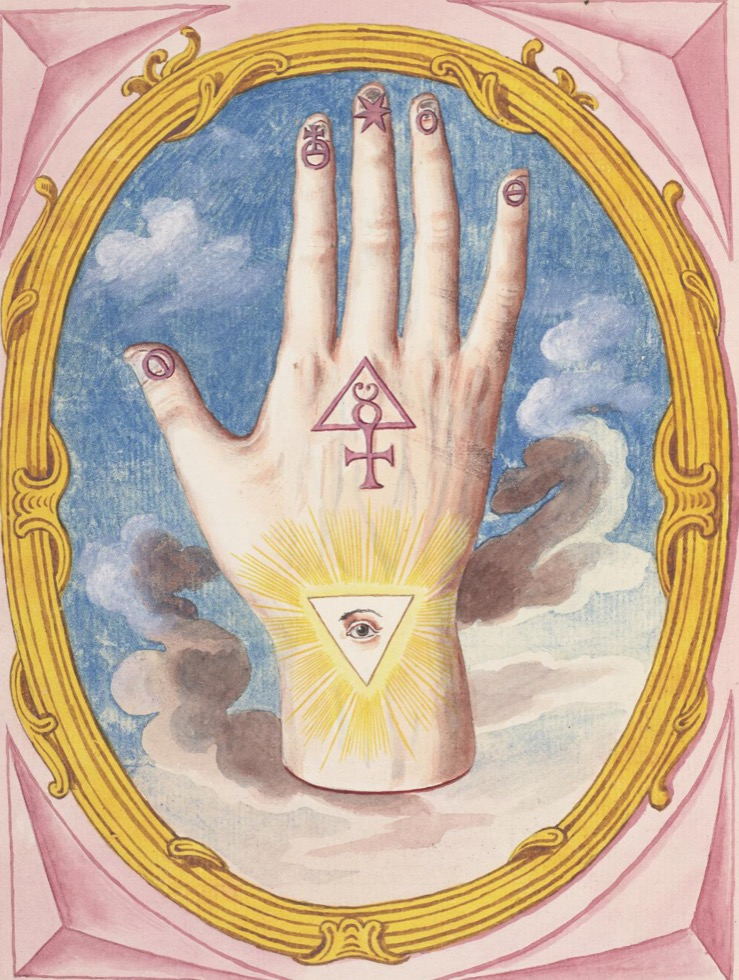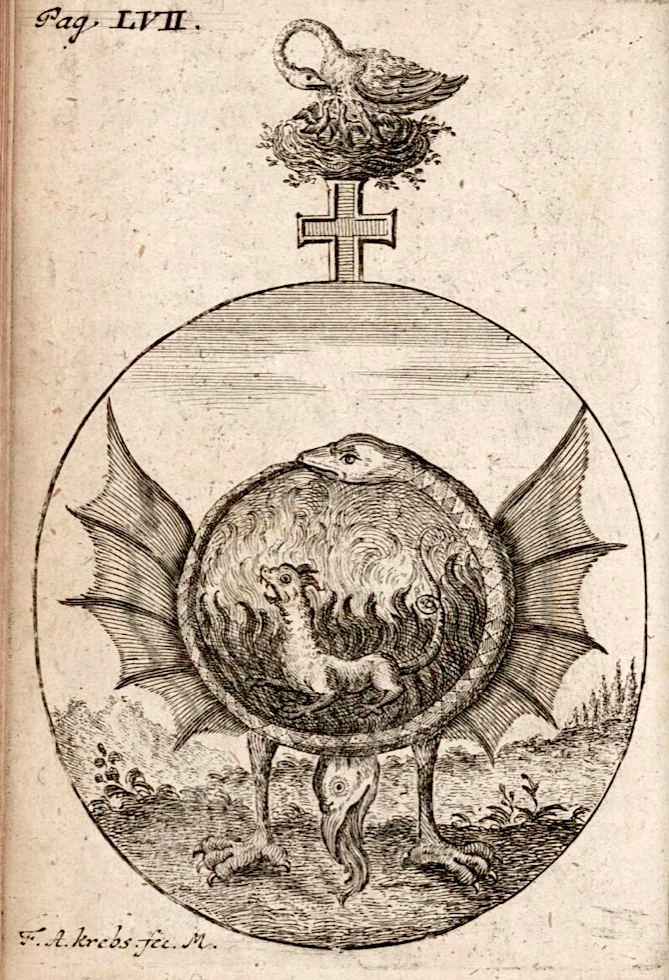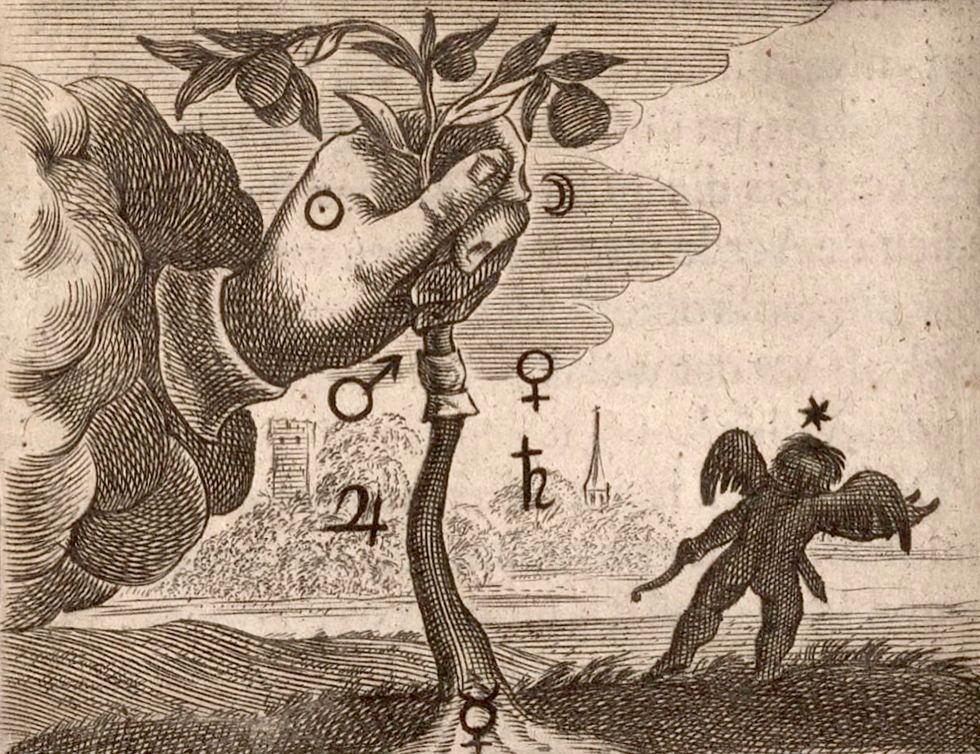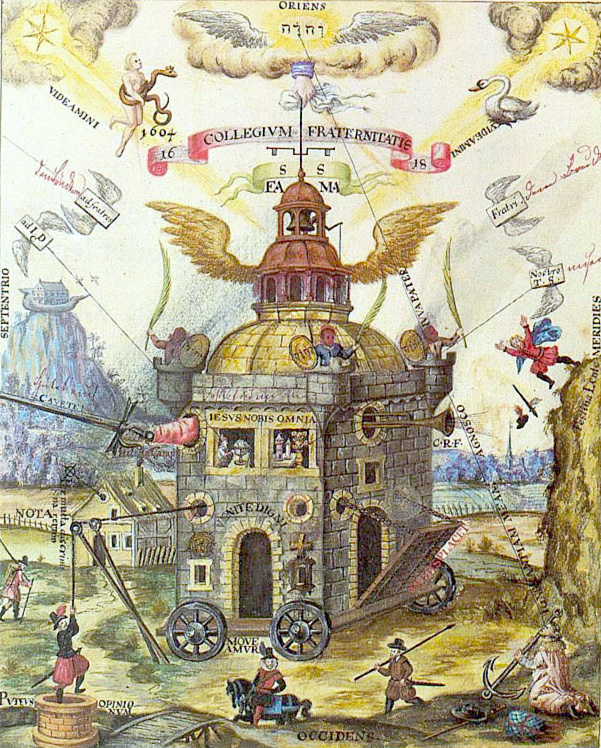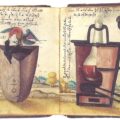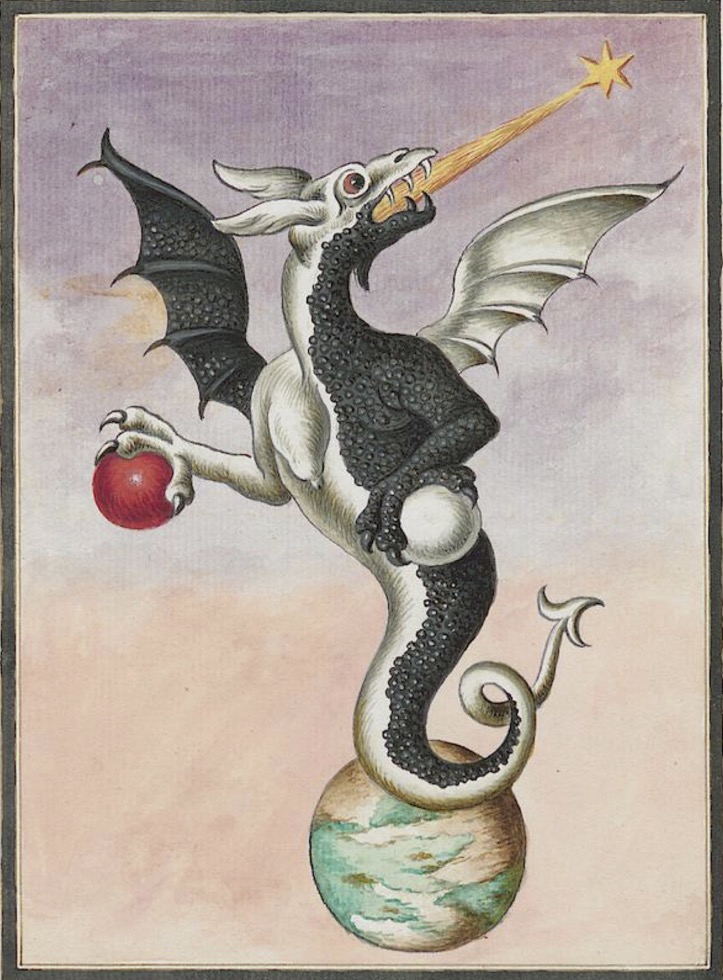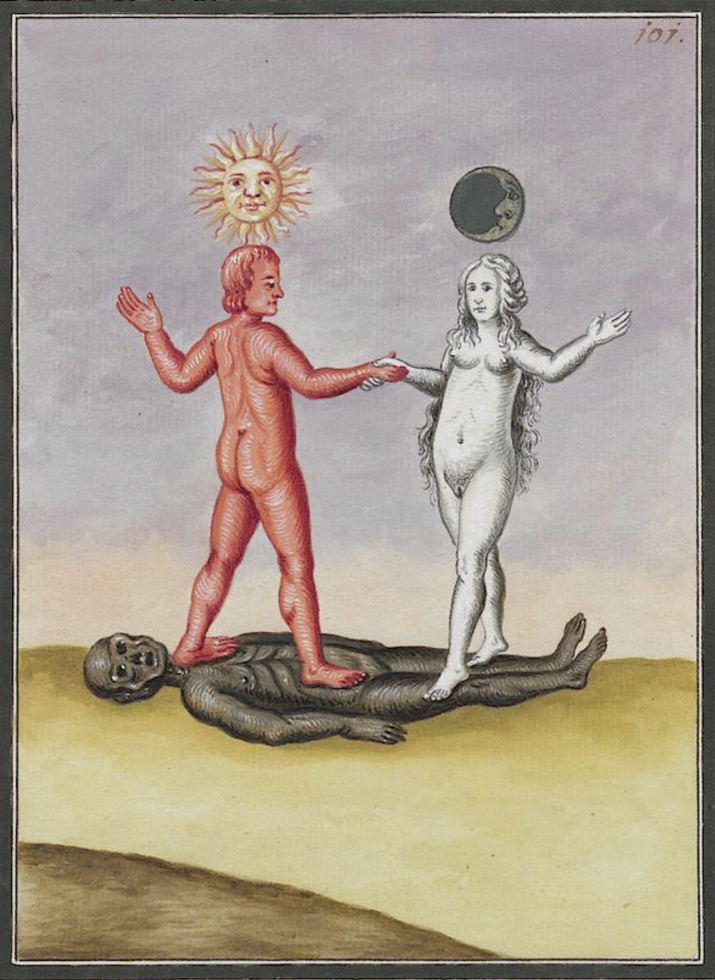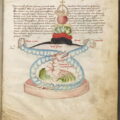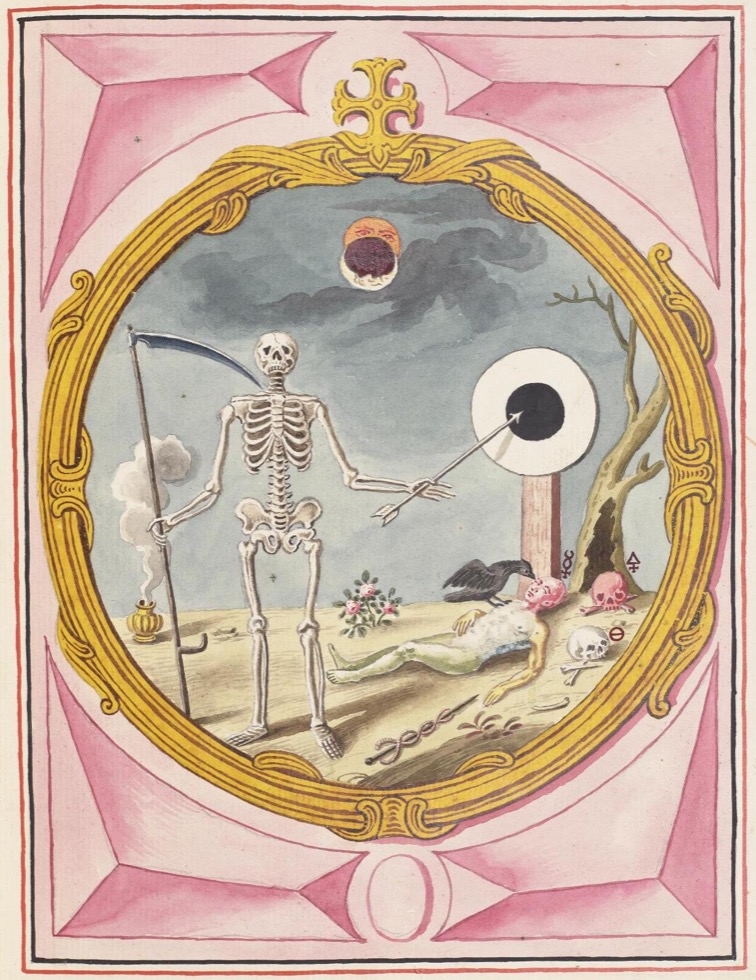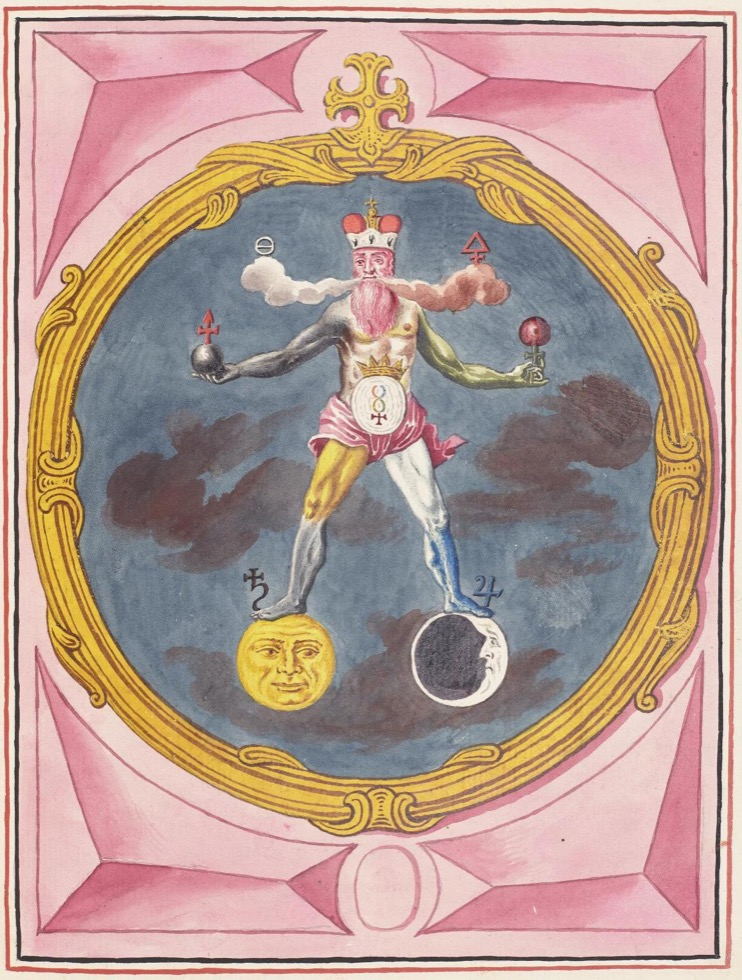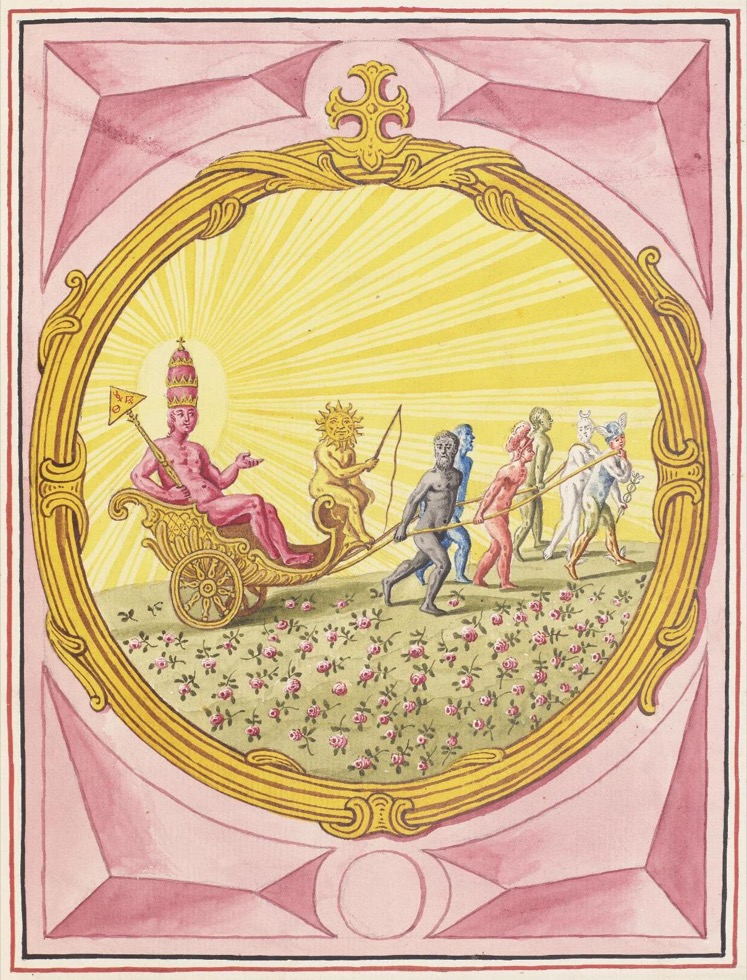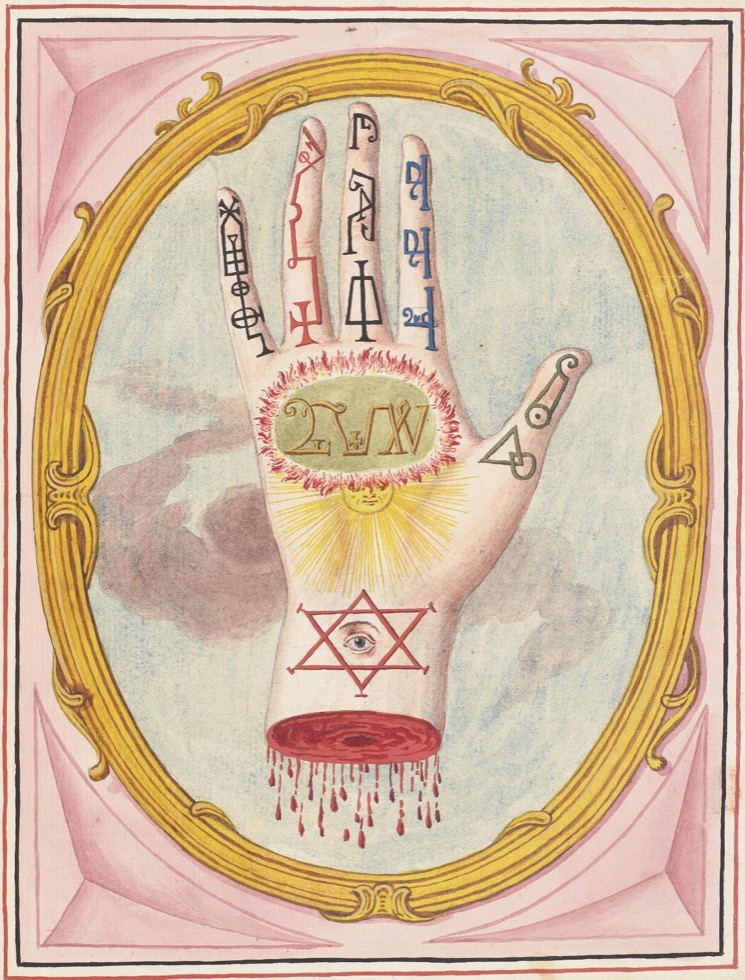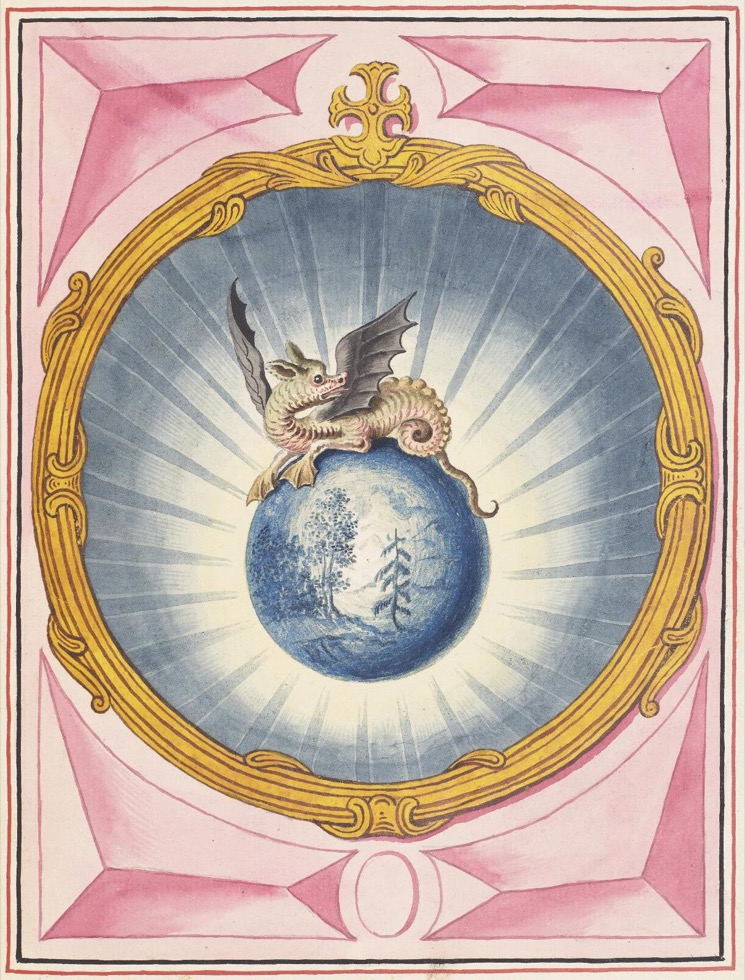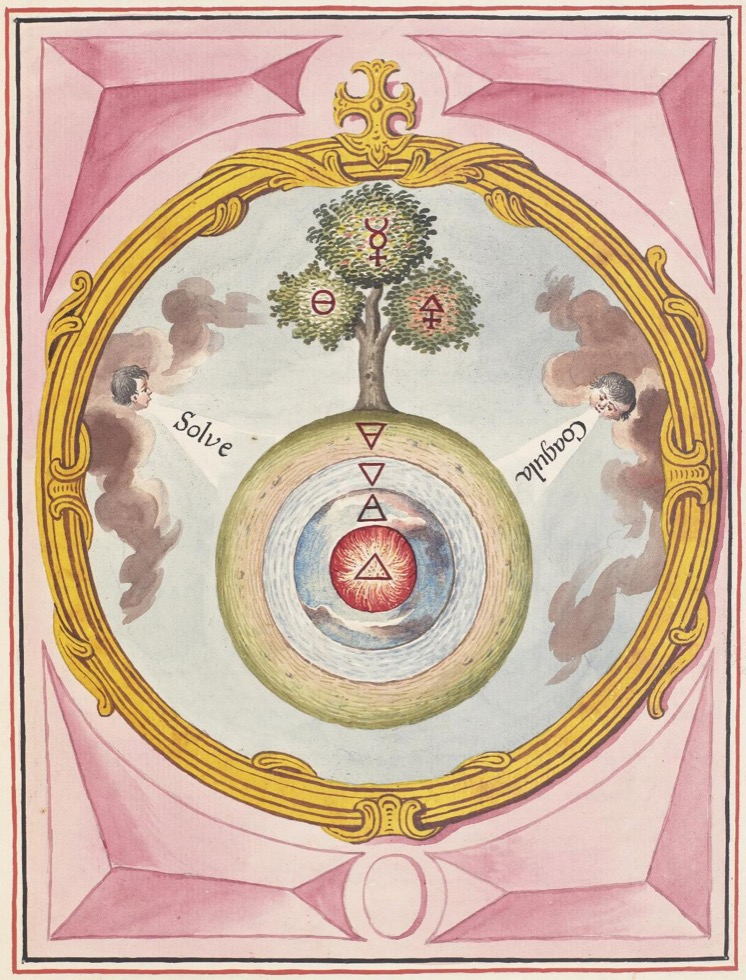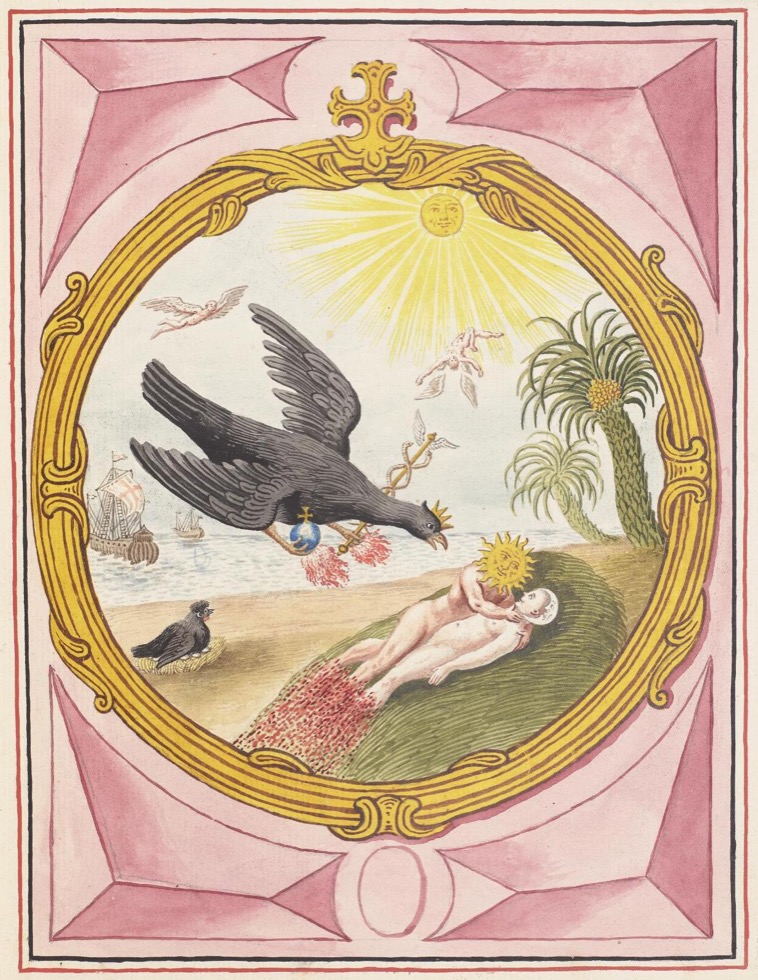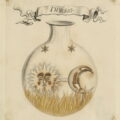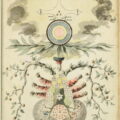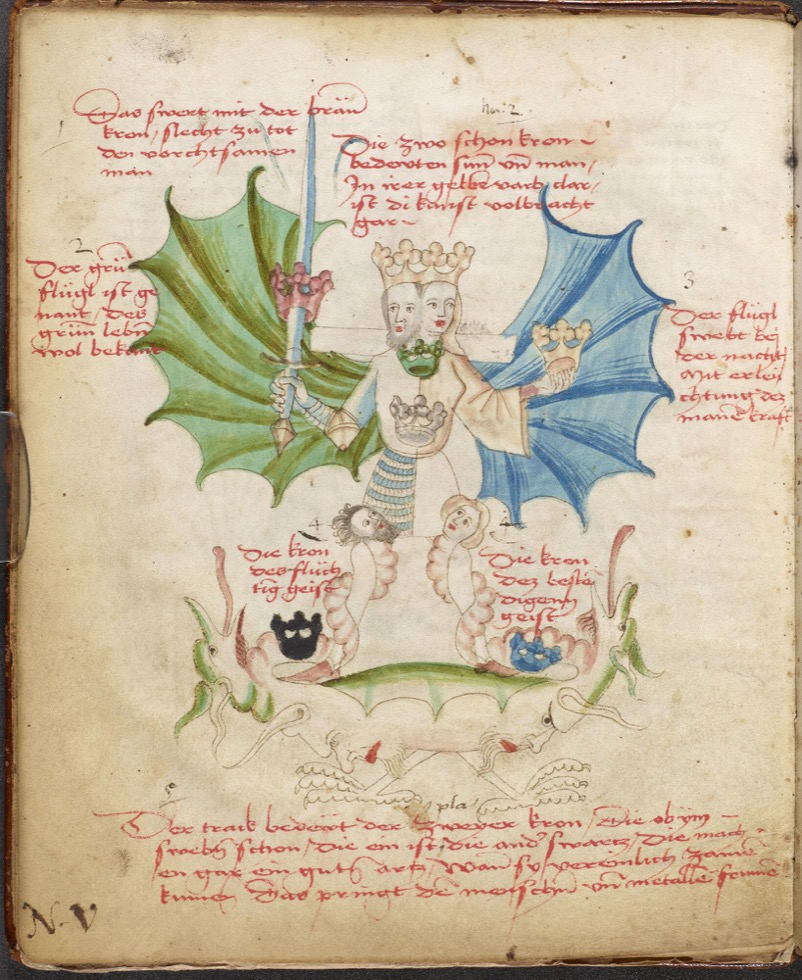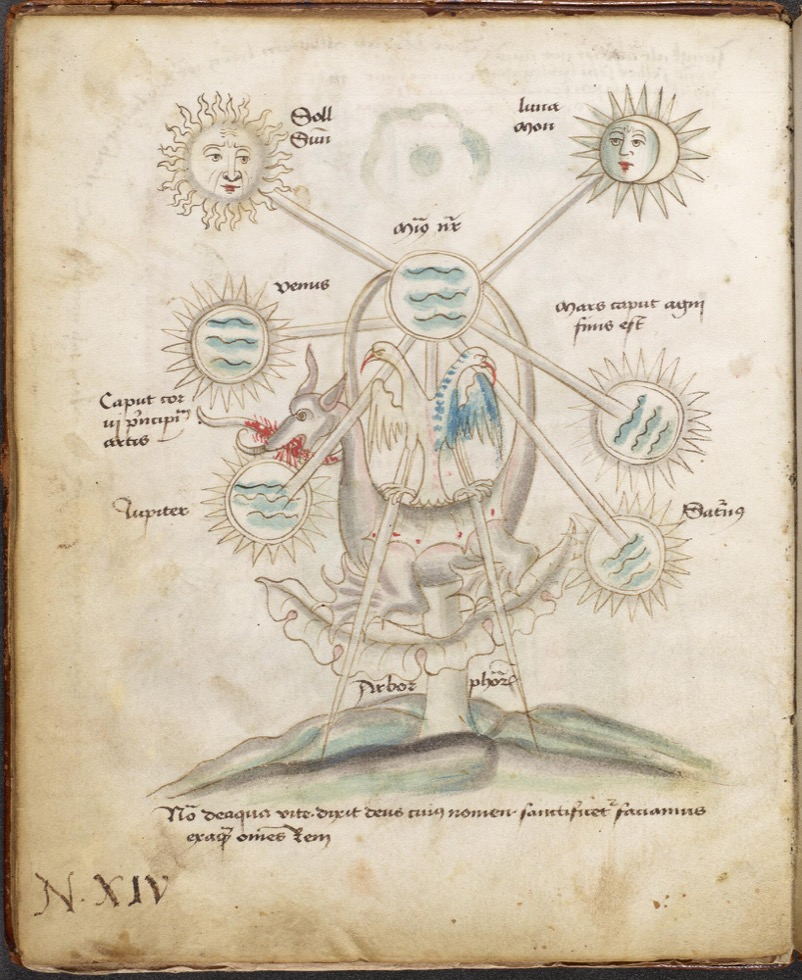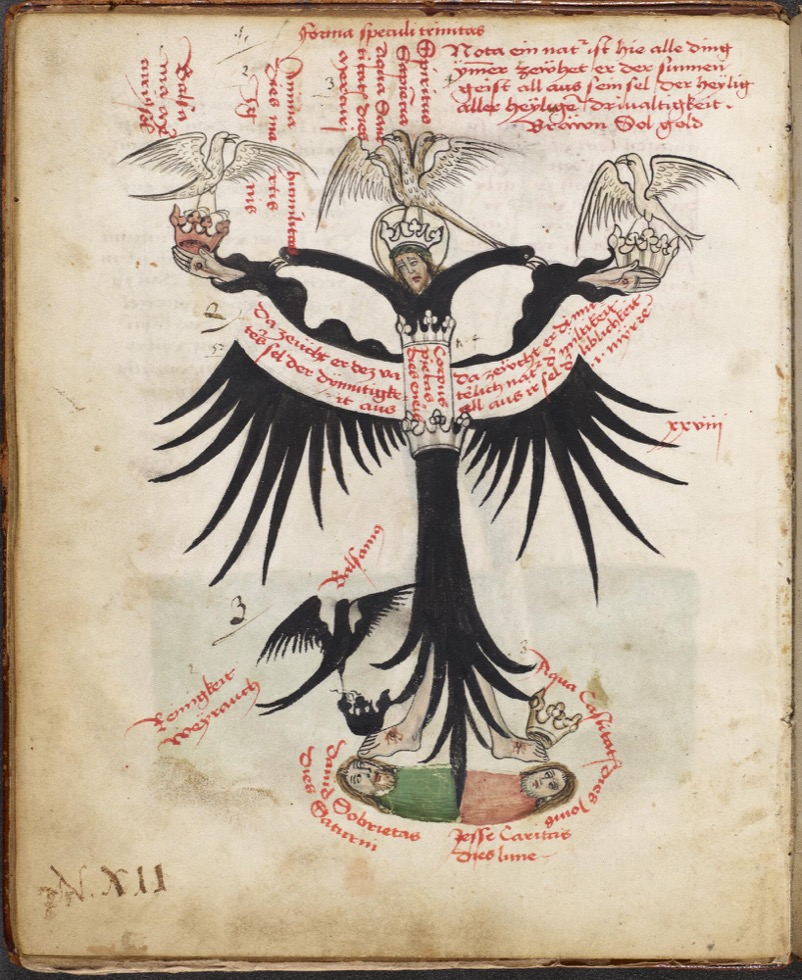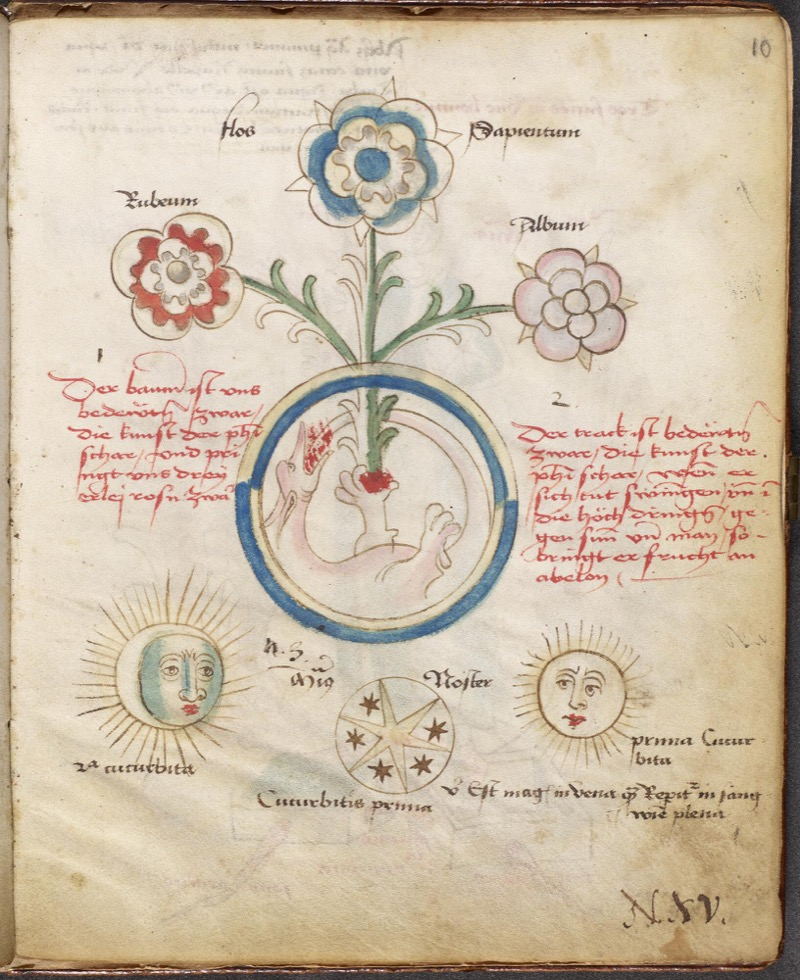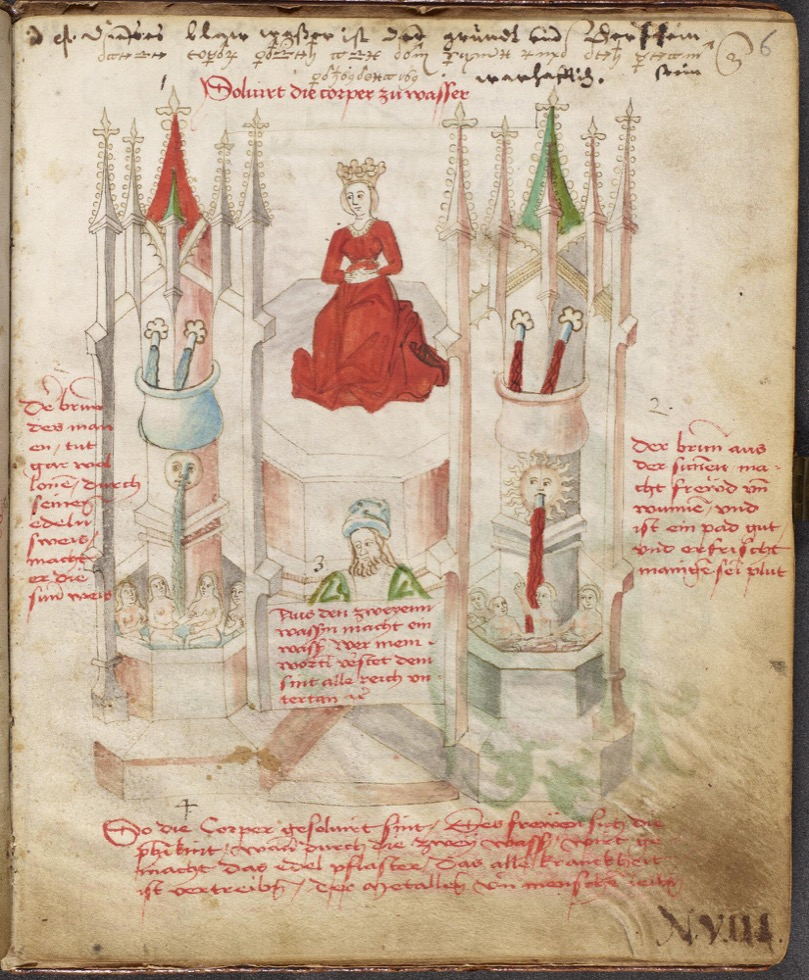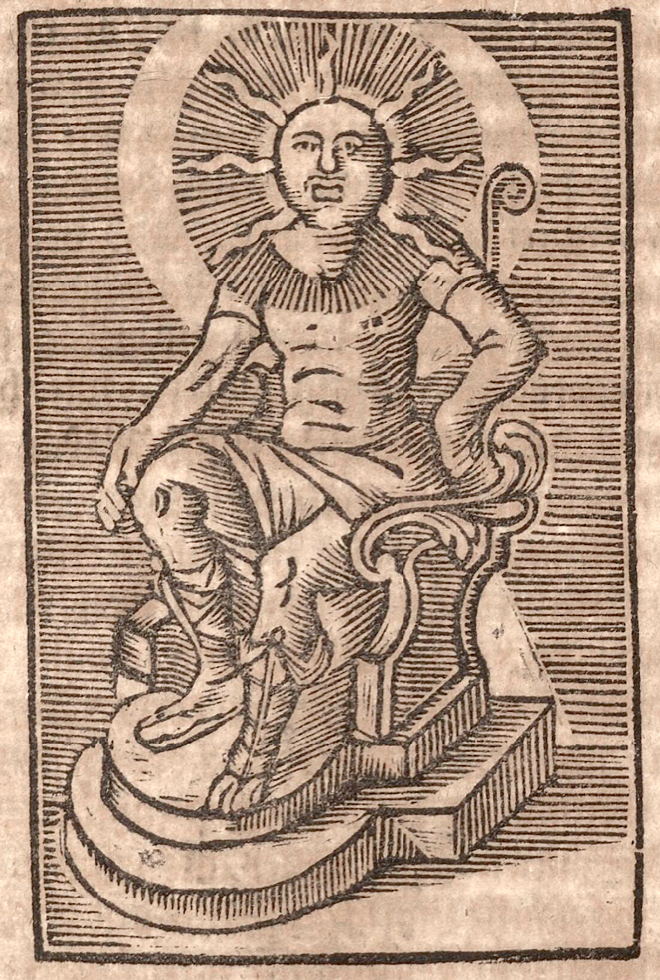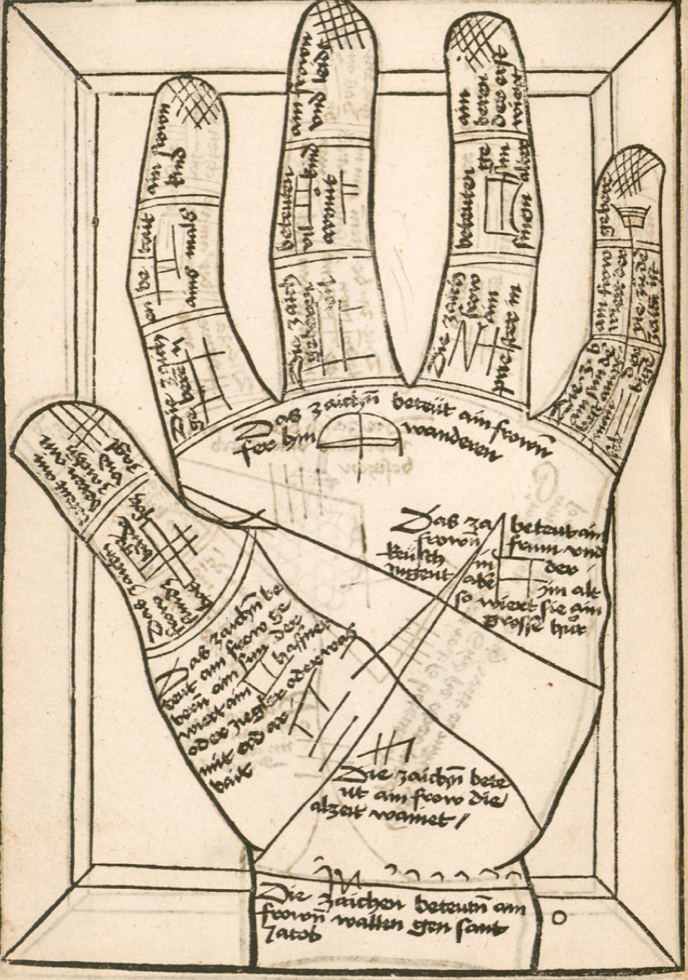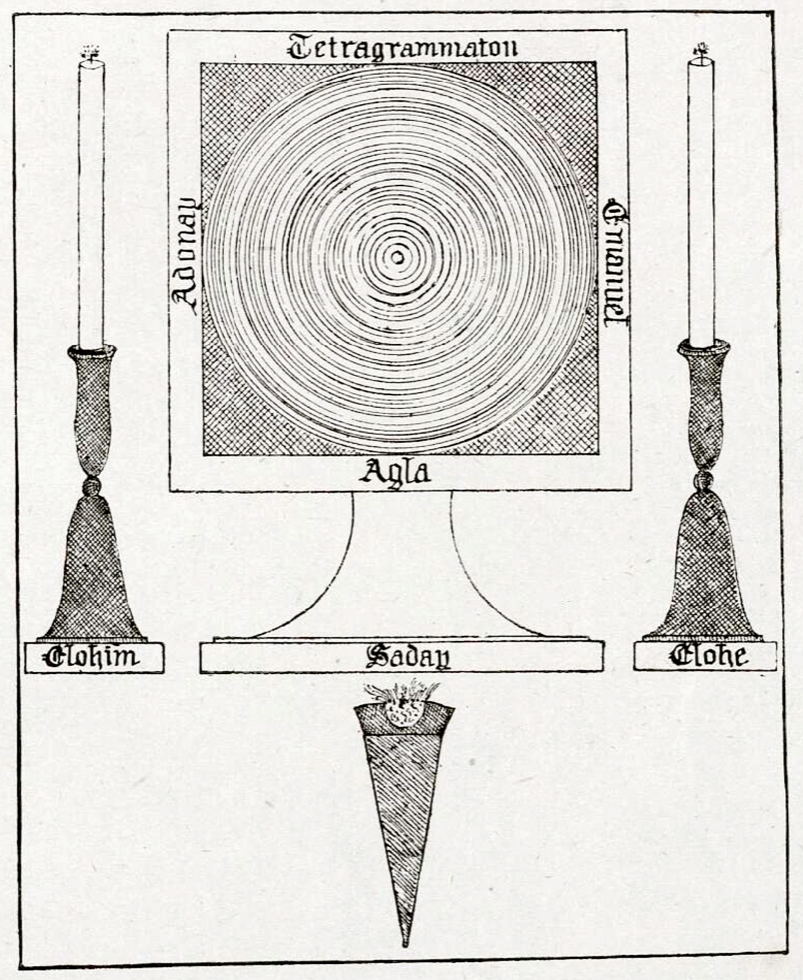
The Hand of the Philosophers is an alchemical symbol first appearing in Isaac Holland’s Die Hand der Philosophen, 15th century. Each feature of the hand corresponds to a quality, element and/or ingredient of the alchemical process. The thumb features a crown & quarter moon and represents the chemical saltpetre, which Holland calls “The King & Lord of all salts.”
The index finger features the star with six points, the meaning of which is only available to initiated alchemists, and the salt Roman Vitriol. The middle features the Sun, and represents Sal ammoniac. Above the ring finger is a lantern, representing alum. The little finger represents both the lock and key of the “hand” as well as common salt. In the palm, the fish represents Mercury, and the fire is just fire.
Images: Sammlung Alchymistischer Schriften, 18th century, Die Hand der Philosophen, 15th century



